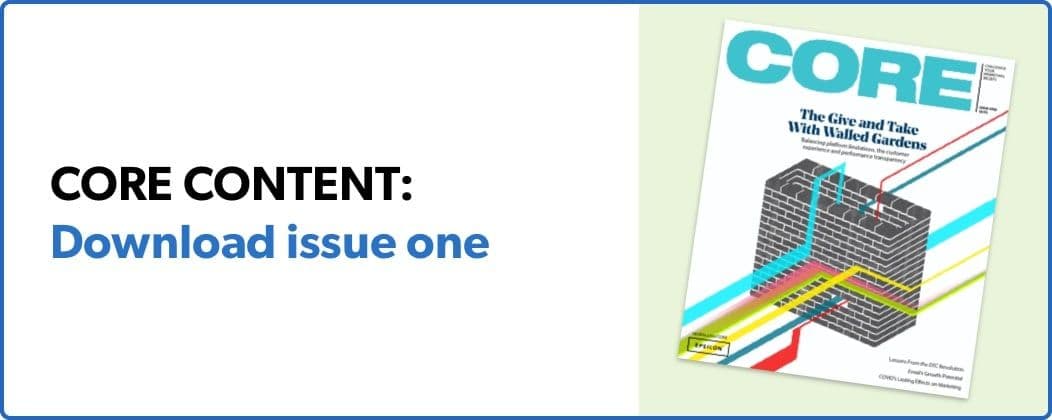


But they’re perhaps even more challenging in financial institutions, which are notoriously risk-averse.
For the past five years, that’s been David Howard’s biggest professional challenge as the president of digital strategy and innovation at 118-year-old OceanFirst Bank, headquartered in Toms River, New Jersey.
For the past 30 years, the bank’s marketing has been conducted via TV, radio and print. Now, as OceanFirst expands its geographic reach—moving into New York City and Philadelphia and acquiring seven banks since 2015—transitioning to digital, intent-based marketing has become a necessity, Howard says.
“Intent-based marketing is about marketing our products based on consumers’ intent to adopt, purchase or consume banking products. That intent may have been either explicitly or implicitly conveyed by the subscriber,” Howard says. “As the customer base is moving toward digital transactions and interactions, we felt that we had to keep up with our existing customers and find new customers—and that means ramping up our digital efforts.”
Howard discusses how the bank built its digital strategy to focus on what matters most: the customer.
David Howard (DH): We’ve been growing dramatically in the past few years on an organic basis as well as on an acquisition basis. We want to make sure that we’re providing bank services all the way across the demographic spectrum.
DH: There are some really dominant players in the digital banking space: the big national banks. Then there are a whole bunch of tech companies that are operating like banks, and they seem to be getting a lot of press and a lot of growth. It could be daunting to regional and smaller community banks to start this process if they have not already begun to focus on their own digital strategies.
When I look at us, a midsize regional bank, I say: The online channel is the most important channel that we have for bringing in new customers. That’s where every conservative, old-school bank should be. So I’m intrigued at how many banks seem to be missing the importance of digital marketing and taking care of their digital customers.
DH: We’ve been working on this for almost five years now. We started off with just three or four people. Now, we have almost 80 people working on digital marketing, digital strategy, artificial intelligence, data science and our digital customer service. So the investment is big. We’re taking the time to make sure our digital tools are up to speed, our staff knows how to train our customers to use them and the customers like them.

DH: They will never land future digital customers without having great digital tools. We’re now opening up more accounts through our digital channels than in 25% of our brick-and-mortar branch locations.
We need to be really good at digital. Otherwise, we’re only getting people that drive by our buildings.
DH: Having the ability to determine ROI on our marketing spend is something that, frankly, we have always wanted to be better at doing. We can now understand how many times we’re reaching individual prospects before we get them to take action. We can then follow that prospect’s journey all the way through coming to our website, applying for an account with us, opening up that account and then expanding that customer’s wallet share.
DH: We’ve worked on the style and image on our website and then on our marketing materials incorporating fresher, younger, more modern content.
In the world of banking, our customers generally like what’s solid, safe, steady, reliable and conservative. And so shifting too far down the road to what millennials and younger generations want may not necessarily work well for the banking space. If more old-school customers aren’t receptive to this approach, and it is not exciting new-school customers either, we will reevaluate.
DH: It’s a much more productive use of our advertising budgets. Before we started doing trigger-based marketing, we were doing a lot of digital advertising that was just so broad: everybody at all times, similar to the old-fashioned style. The return on our marketing investment is significantly less with a broad approach than when we are targeting the right person at the right time with the right piece of content.

Image credit: Illustration by Denise Nestor